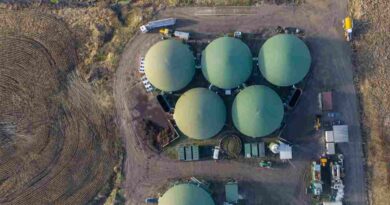Google’s new Data Center in Denmark will be Powered by Renewables

Tech giant Google announced yesterday that it plans to invest 4.5 billion Danish crowns ($690 million) in building a new data center in Fredericia, the company’s first in Denmark. The company also said that it is committed to matching its energy use with 100 percent carbon-free energy.
The Fredericia data center will be among the most energy efficient data centers in Denmark to date, taking advantage of advanced machine learning to make sure every watt of electricity counts and powers what will be the home for a large group of the company’s servers that power its products like Search, Gmail, and YouTube.
This commitment to match its energy use with 100% carbon-free energy also includes all the electricity that the data center will consume in operation. The Alphabet Inc. subsidiary mentioned in their statement, “We’re pursuing new investment opportunities (called Power Purchase Agreements, or PPAs) in Danish renewable energy projects like onshore wind, offshore wind and solar energy. In Europe, Google data centers typically use one third less energy than a typical data center, yet we’re still striving to use even less.”
The Fredericia data center, which should be constructed by the end of 2021, will be Google’s fifth data center in Europe after Ireland, Finland, the Netherlands, and Belgium. “We’ll look to continue investing in Europe, leading the way with green projects and building ties with the local community,” said Joe Kava, VP Global Data Centers.
In September, the company announced that it had signed agreements to purchase additional renewable energy from three new wind farms in Finland, totaling 190 MW in capacity to power its data center in Hamina. With the agreement the company had signed power agreements totalling nearly 900 MW (wind and solar capacity) in Europe. “We’re excited to be playing a role in accelerating Europe’s clean energy transition. As the world’s largest corporate buyer of renewable energy, we’ll continue to do our part to scale renewables in Europe—through innovative transactions and policy engagement,” the company released in a statement at the time.
Of course, with its high margins and profitability, Google, along with other Silicon Valley majors has found it easier to go down the renewables route. Until 2015, the firms buying up renewable power were usually tech majors only, including Facebook, Microsoft and others. With costs coming down drastically since then, it is now pretty much a strong business case to opt for renewables. An area where we hope Google, like Microsoft, will do much more to ensure smaller firms can also benefit and make the shift.




